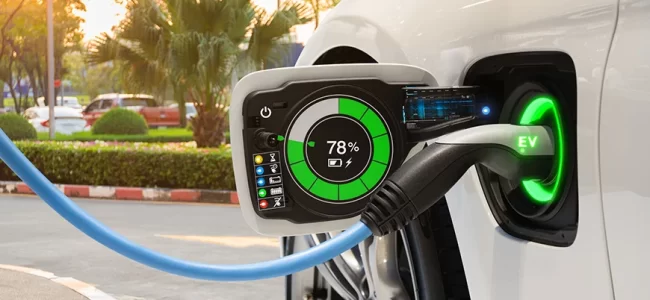The Global EV Outlook 2021 Report reveals some promising developments in the electric vehicle (EV) segment. Countries like the United States, China, and the European Union have put plans into place that will phase out internal combustion vehicles completely.
Research shows that EVs create a significantly lower long-term carbon footprint than traditional vehicles. Since these countries account for 90% of global EV sales, this is a huge step toward fighting climate change.
In order to get EVs on the road, governments are providing incentives to manufacturers and installing the required infrastructure. The Global EV Outlook 2021 Report provides valuable insights for EV companies and battery manufacturers that can help them devise their electric vehicle deployment policy and set them up for success.
What is the Global EV Outlook 2021 Report?
This is an annual publication that details the impact of electrification, shared mobility, and autonomous driving on the road transportation system from the current year through 2050. All types of vehicles are covered including commercial, recreational, and public transportation.
How to Use the Global EV Outlook 2021 Report for Devising EV Deployment Policy
- 1. Understand the Major Policy Drivers of EV Adoption
Financial incentives are being used to advance the adoption of electric vehicles. As their demand increases, manufacturers will produce more EVs and battery manufacturers will design more efficient batteries.
Government incentives are being put in place to offset the initial price gap between conventional vehicles and electric vehicles.
Signature countries have set mandatory sales targets for EVs of 30% by 2030. This aspirational goal provides a benchmark that will be used to measure progress in each area. Fourteen countries have endorsed this benchmark.
To help in the fight against climate change, CO2 emission regulations are being closely monitored. The European Union saw the largest growth of EV sales, reaching 2.1 million. This is due to their strict CO2 standards which serve to promote electric car sales.
As electric vehicle market research continues to increase, traditional vehicles will be slowly phased out of the market. The goal is to reach “net zero” emissions in road transport by the year 2050.
- 2. Stimulus Measures and Regulations
Safety is the most important consideration and when dealing with EVs, we have to start by taking a closer look at Li-ion batteries, charging stations, and stationary storage systems. Certain factors must be weighed to create the best approach. For example, fire countermeasures from the perspective of first responders must be taken into full consideration in order to limit the risk of fires. Data analysis and industry reports are two tools used to develop these rules.
After safety, governments will have to incentivize the adoption of EVs. The United States provided a tax credit of $7,500 in 2020 for individuals who purchased an electric car, which is not up-to-par with other countries like Europe and China.
The U.S. is focused more on state-level policies which will push for stronger EV deployment. California’s new ZEV sales requirement for heavy-duty vehicles set a precedent and will take effect in 2024.
Over 120 countries like China and the European Union have announced pledges to reach net-zero emissions in the next few decades.
- 3. Infrastructure Networks and EV Battery Supply Markets
Most EV charging is done at home but if EVs are to become the new standard, public charging stations will become critical. China currently has the most publicly accessible chargers and other countries are slowly catching up. In 2020, 1.3 million units had been built with 30% of them being fast chargers. However, the rate of installation was 45% slower.
Let’s look at this data from a U.S. perspective. The installation of slow chargers increased by 28%, putting the total a little over 100,000. There was also an increase in the installation of fast chargers, putting the U.S. total at 17,000.
We’re also seeing efforts to develop mega-chargers but the regulations are still being fine-tuned. These are designed to charge heavy vehicles. Prototype testing started back in 2020.
Final Thoughts
Electric vehicle research as shown through the Global EV Outlook 2021 Report provides some deep insight into what to expect in the EV segment in the coming years. EVs are gaining traction and we can expect to see them phasing out traditional vehicles in the upcoming decade.
In order to develop a successful deployment policy, it’s important that we look at market research pertaining to the state of the market, regulations, and the future of EVs.
Companies looking to dive even deeper into the EV market should consider partnering with an experienced research firm like Research Optimus to generate insights specific to their target region. Contact ROP today for gathering insights on electric vehicle and market trend reports at affordable prices.






